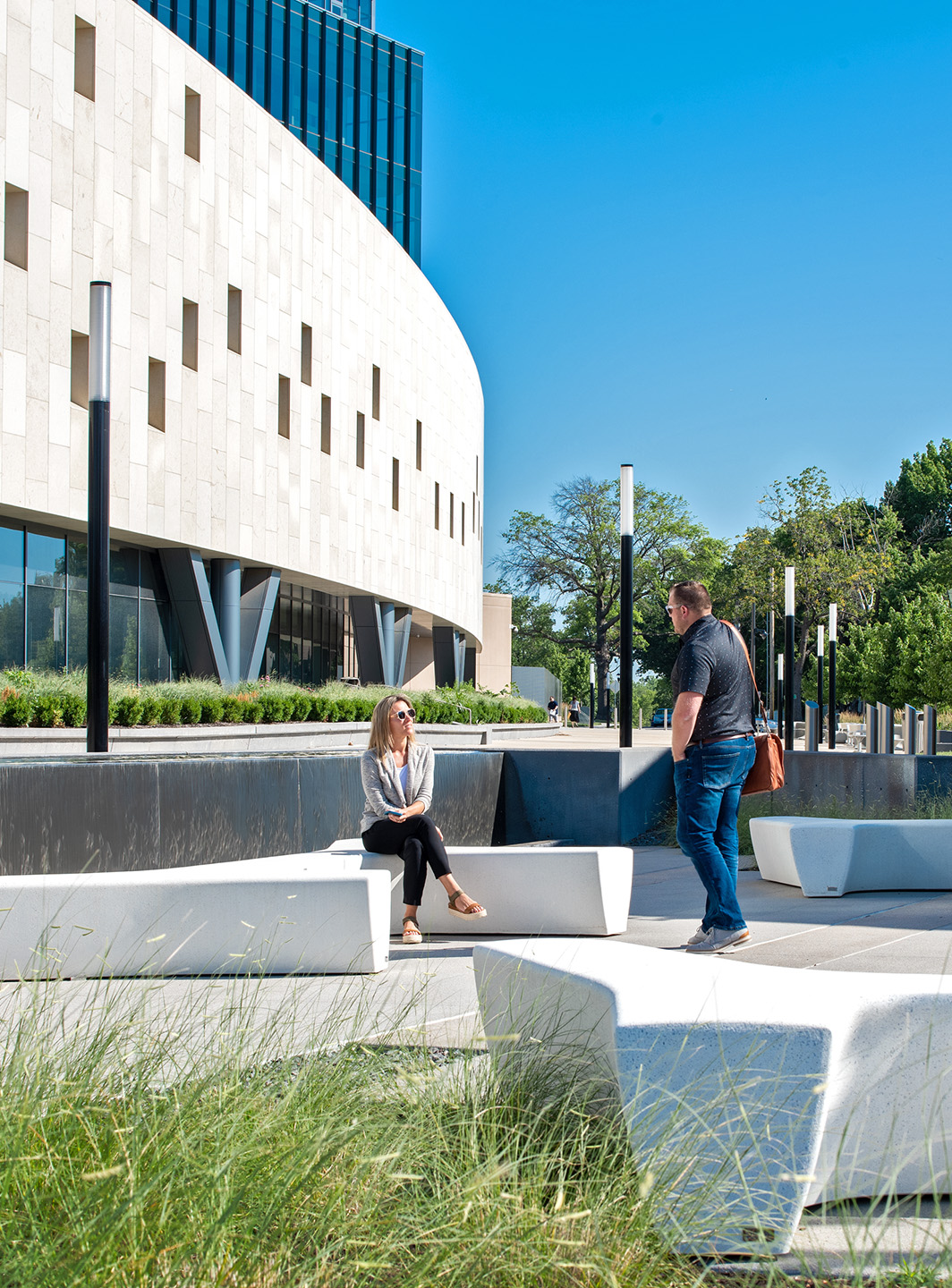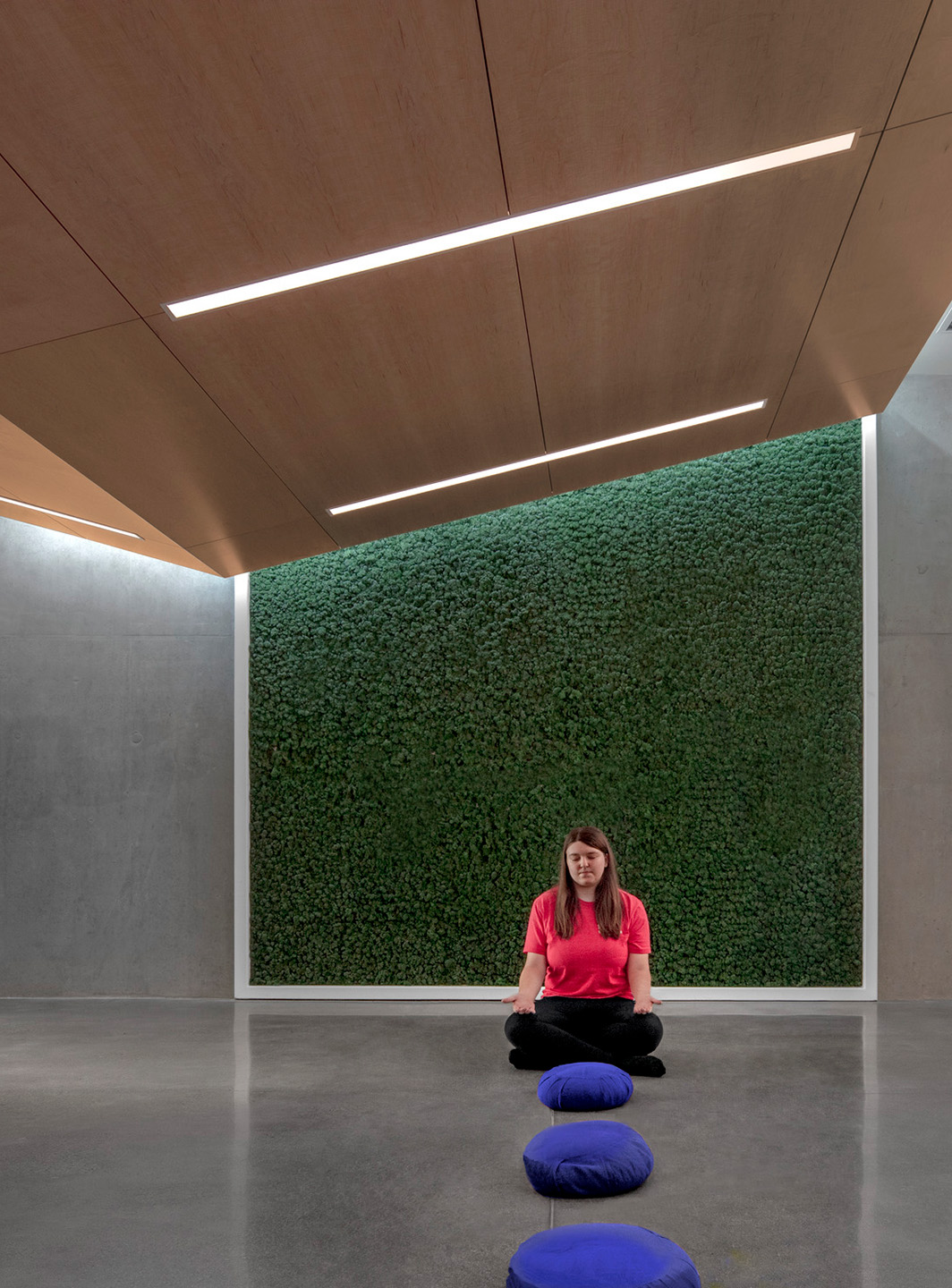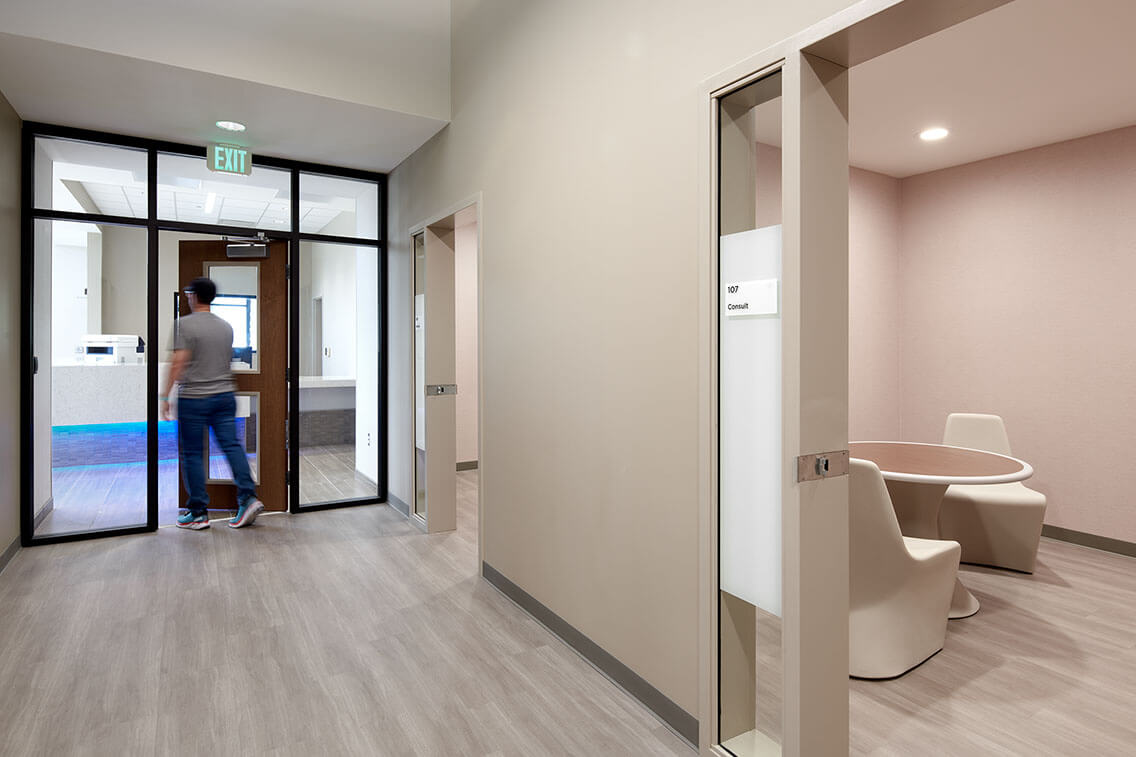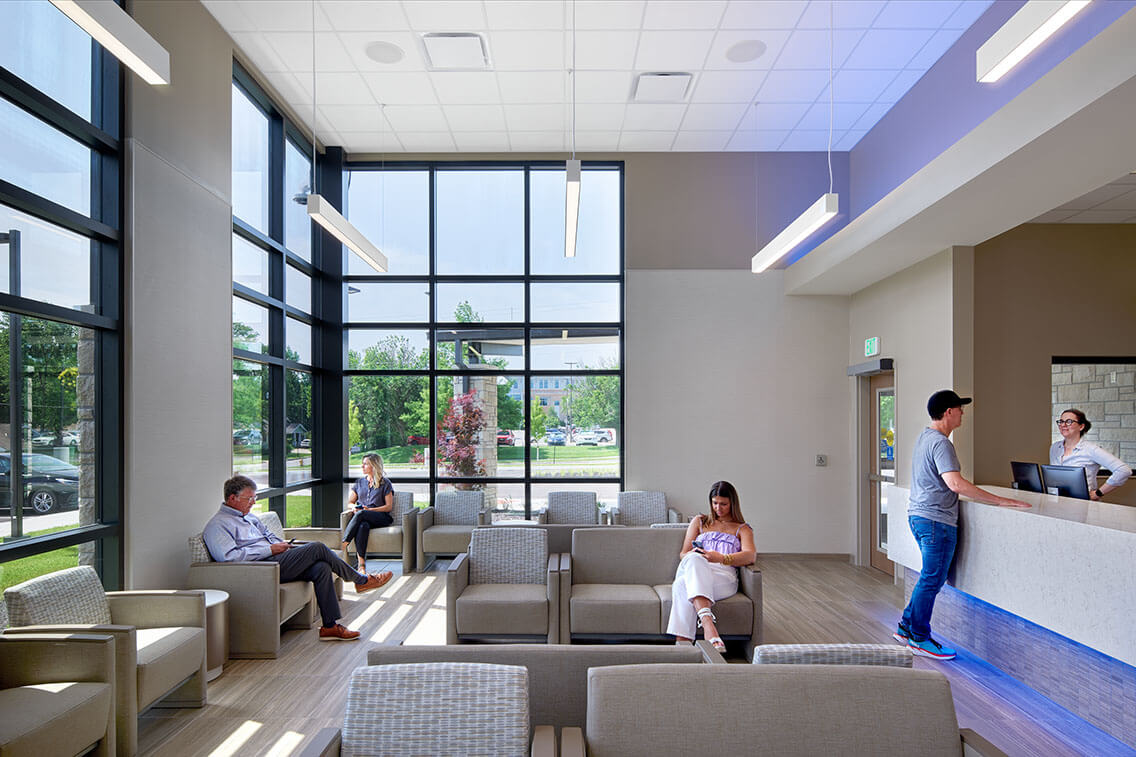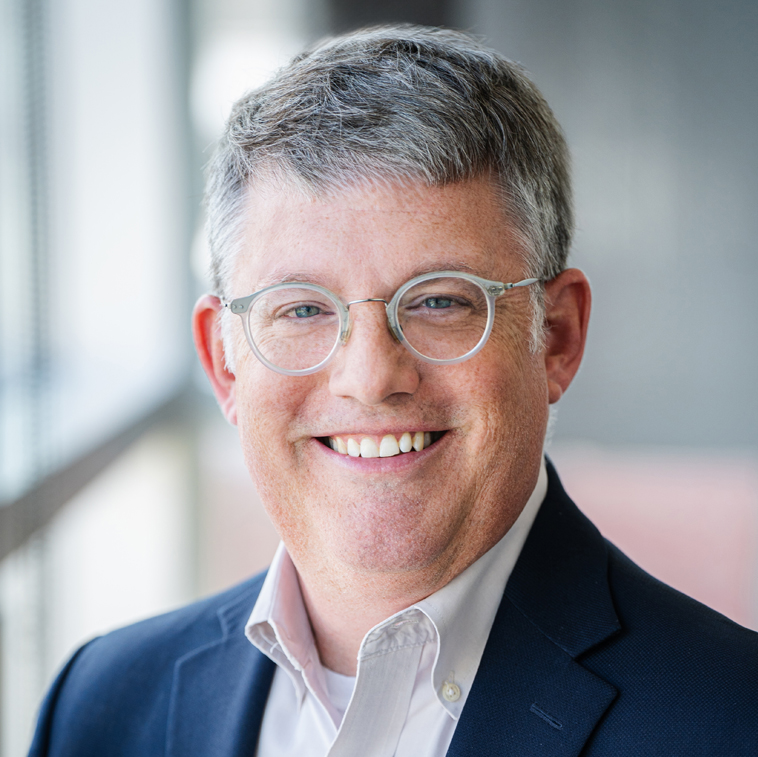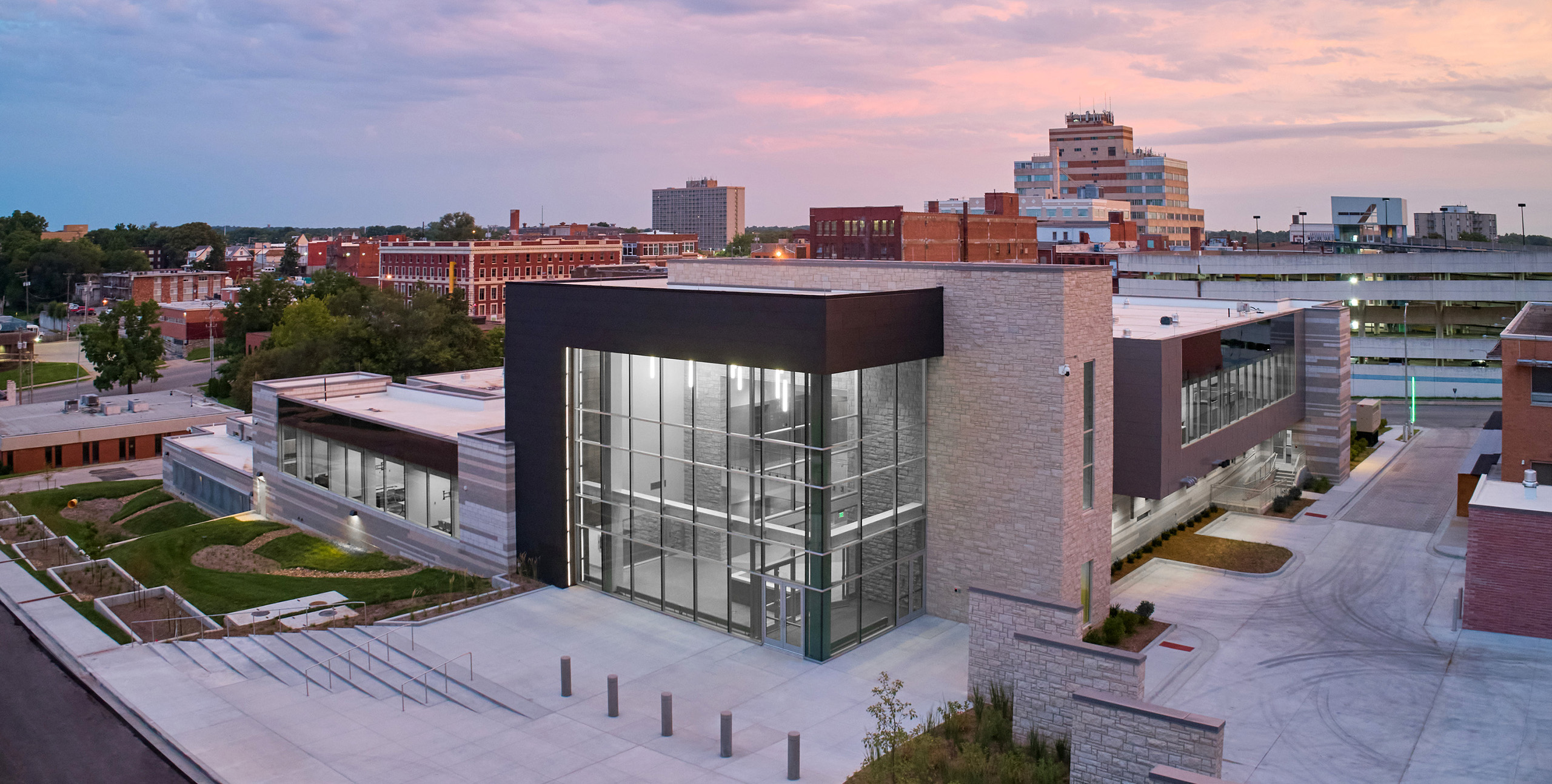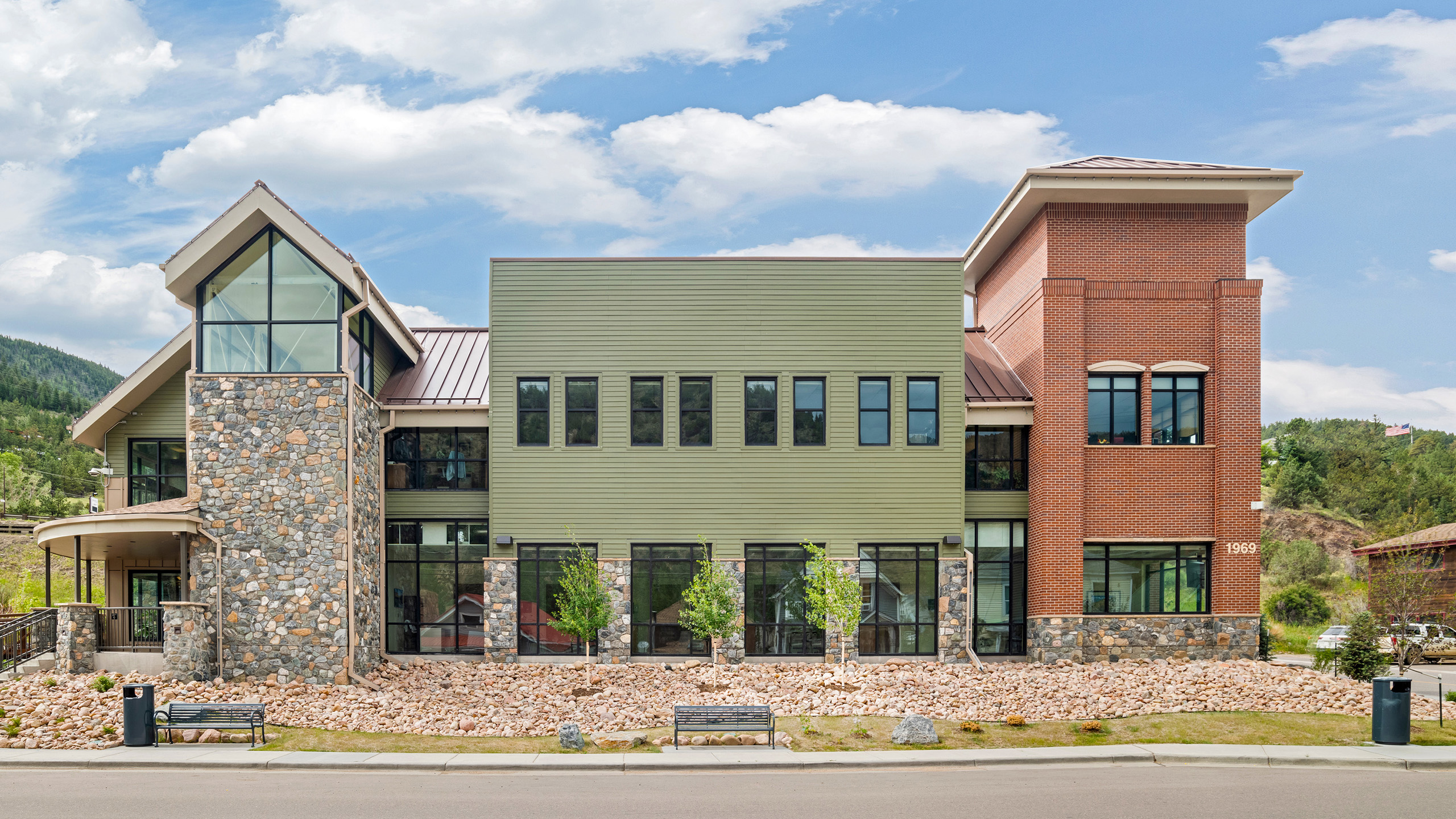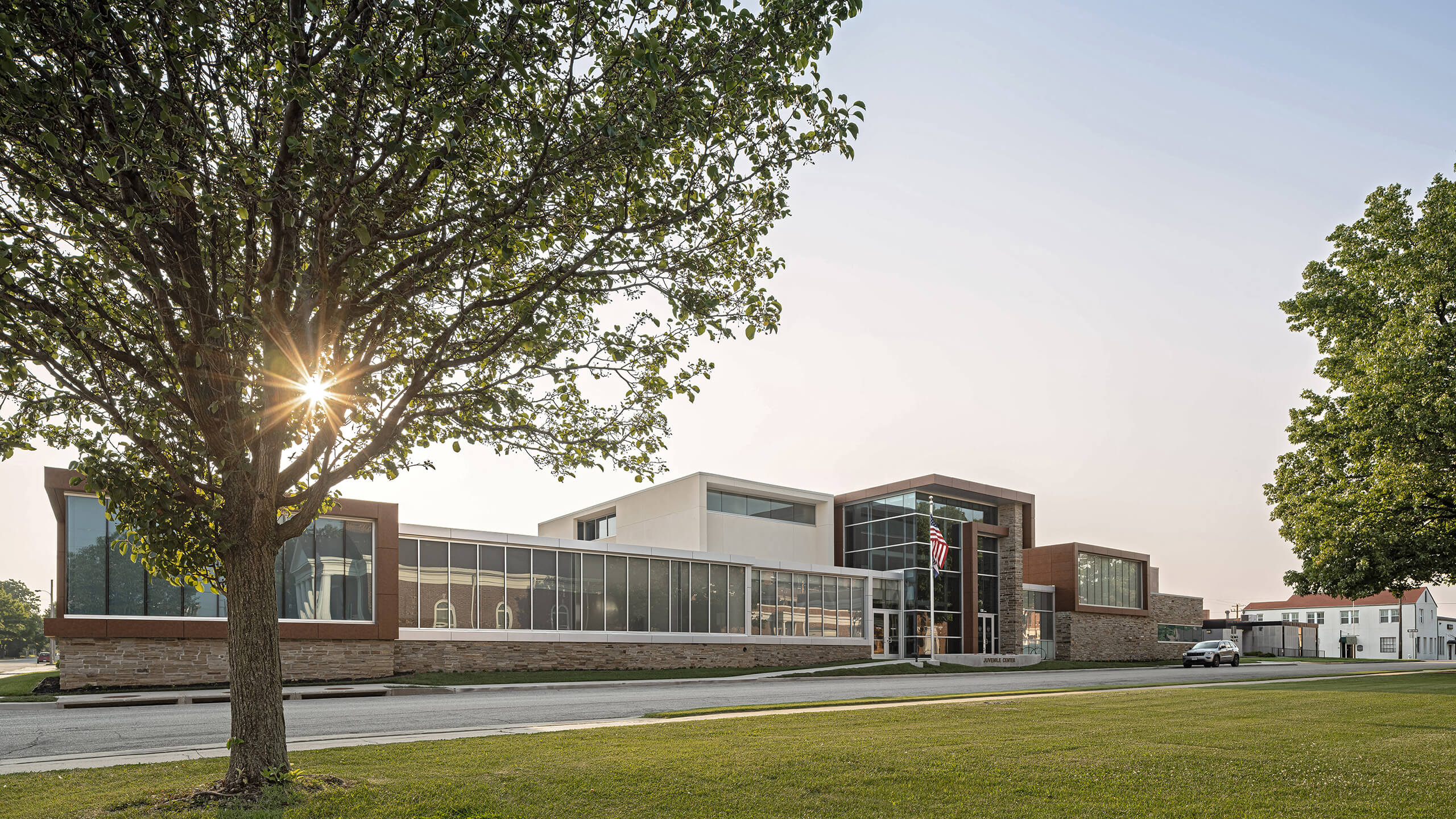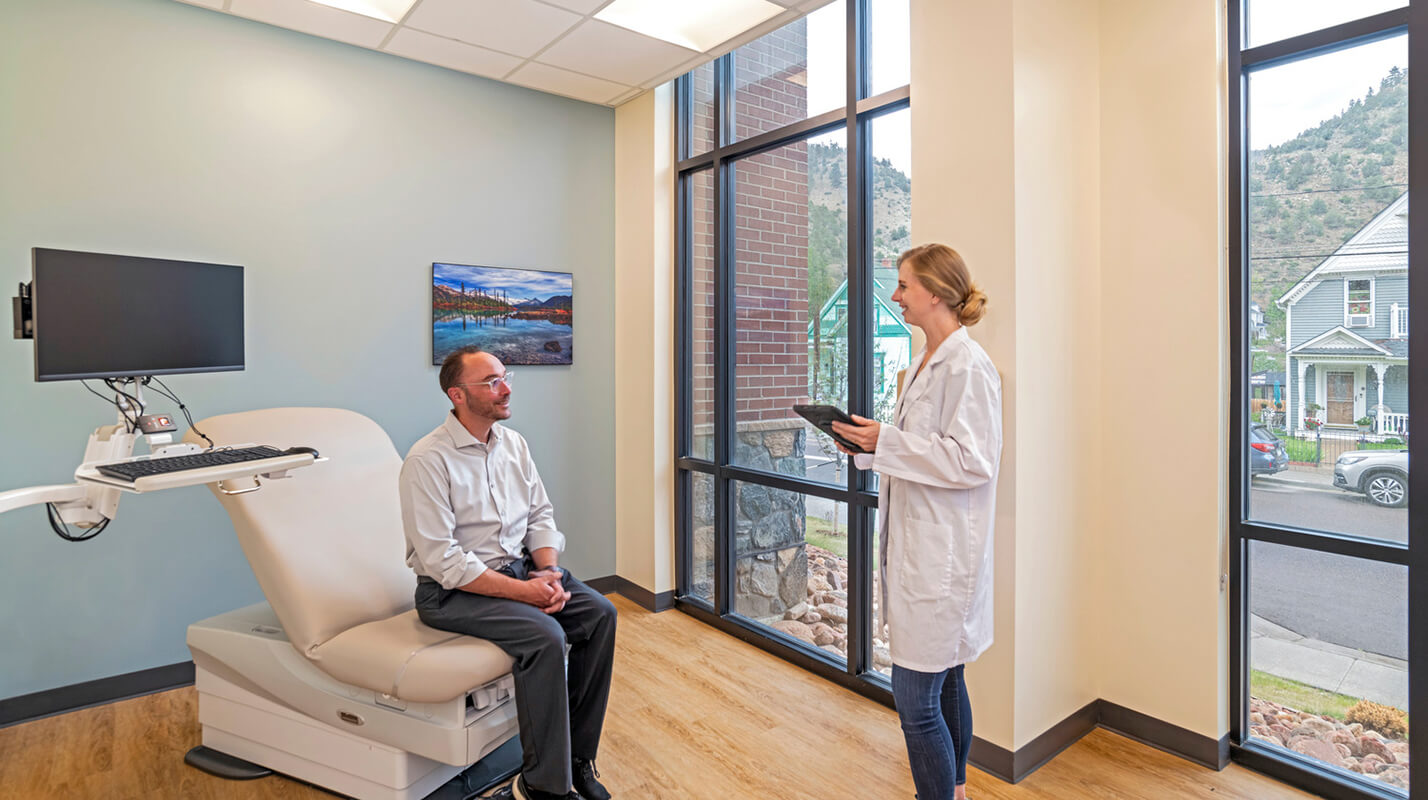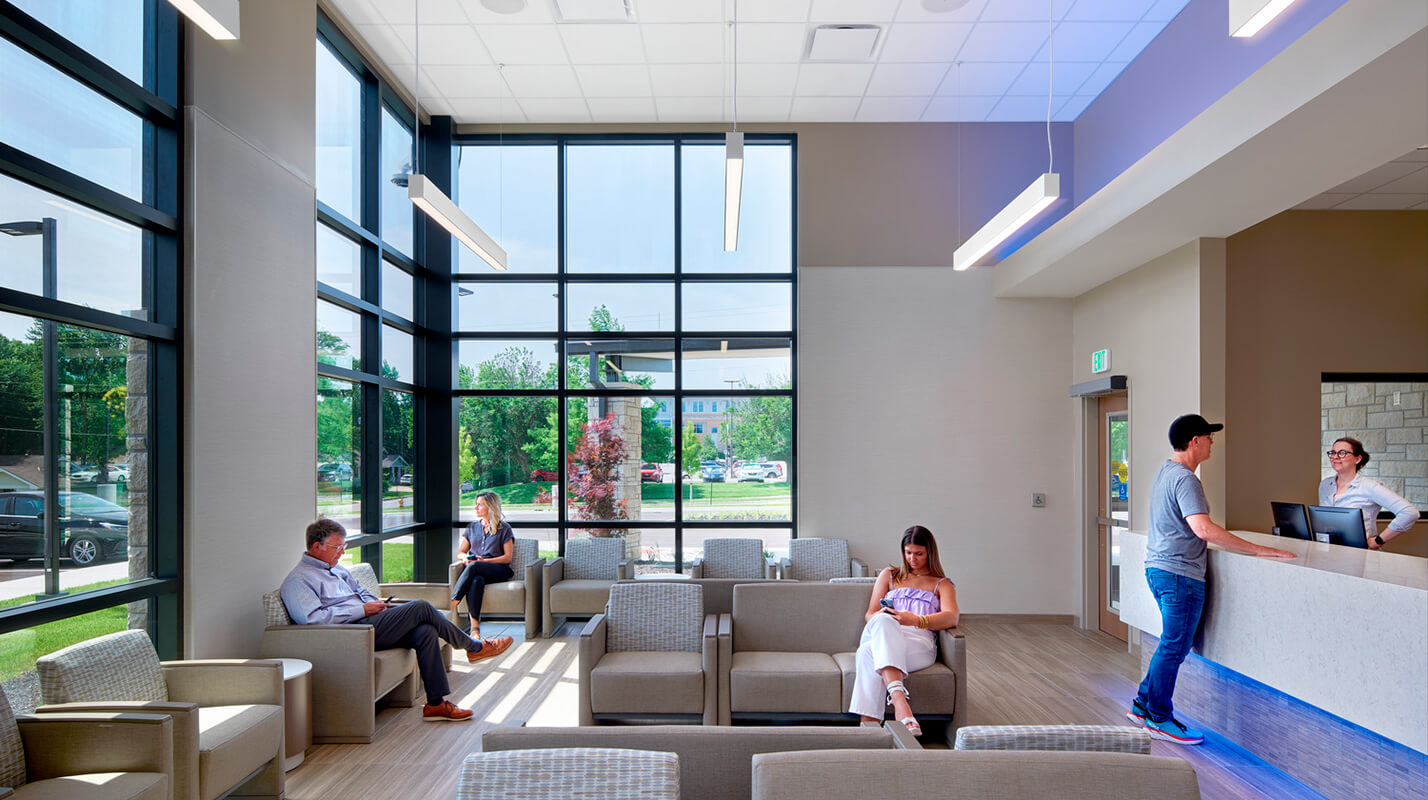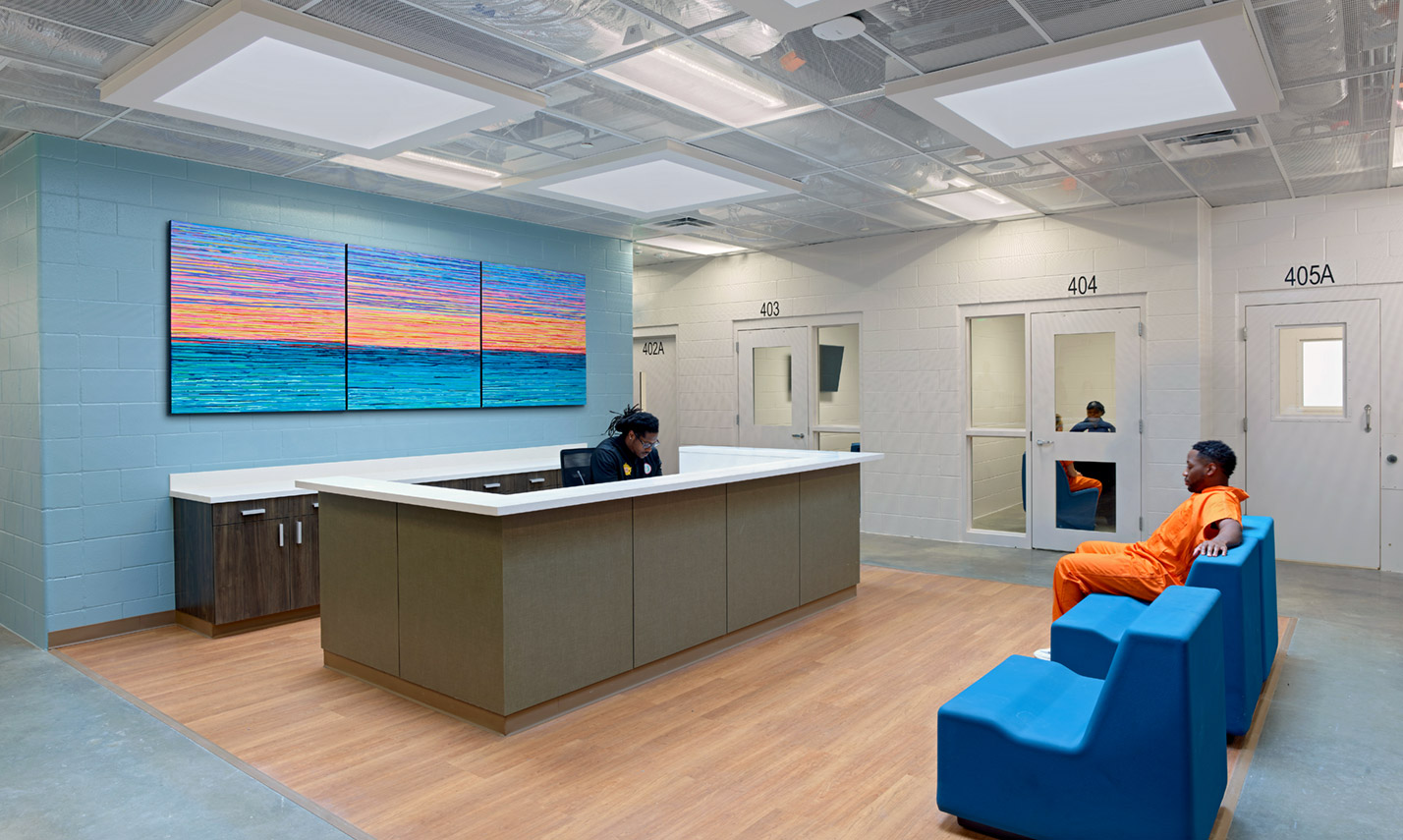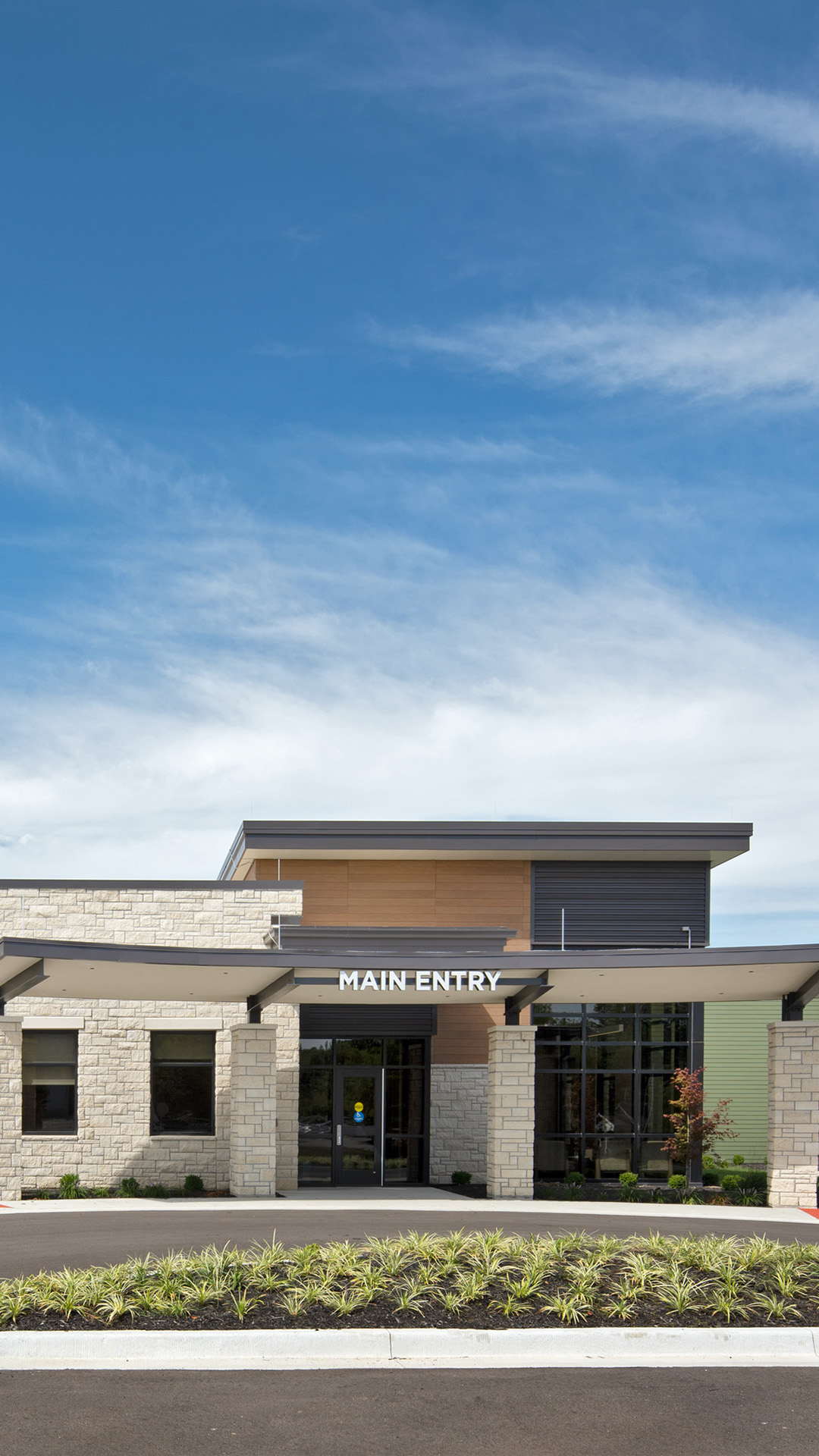
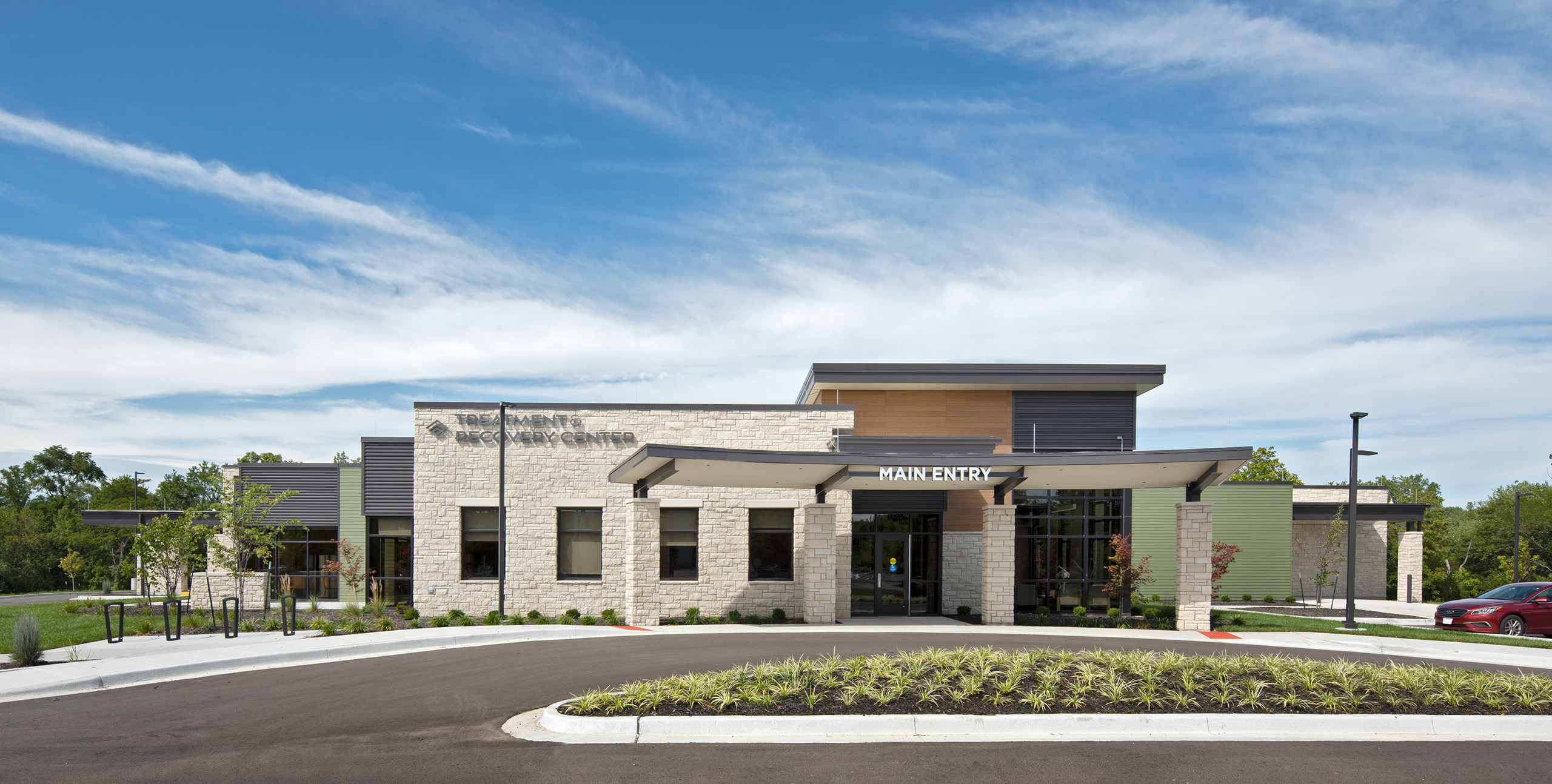
Douglas County Treatment and Recovery Center
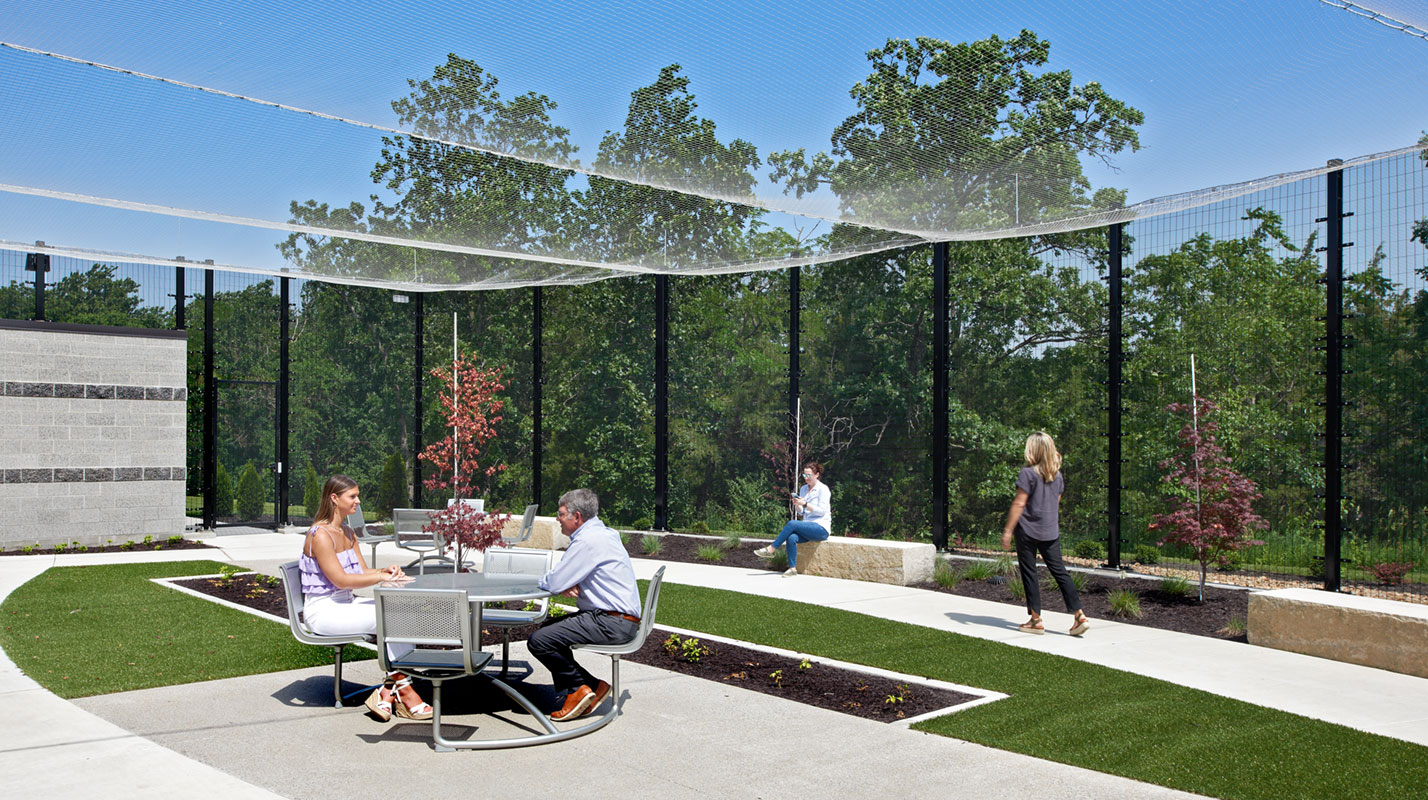
A community facility designed for mental and behavioral healthcare
Located in the progressive college town of Lawrence, Kansas, the Treatment and Recovery Center (TRC) is a new facility type aimed at filling the gap between hospitals and detention facilities for people experiencing mental health or substance abuse disorders.
Mental healthcare is a nationwide concern in the United States, often made more difficult to access in communities lacking nearby institutions designed to support mental and behavioral health. As a result, hospital emergency departments and law enforcement facilities can become overwhelmed while lacking the ability to fully assist those needing support. When neither of these facilities is ideal for those in crisis, this Lawrence community found a way to fill the gap with a facility specifically designed for mental health and addiction treatment.
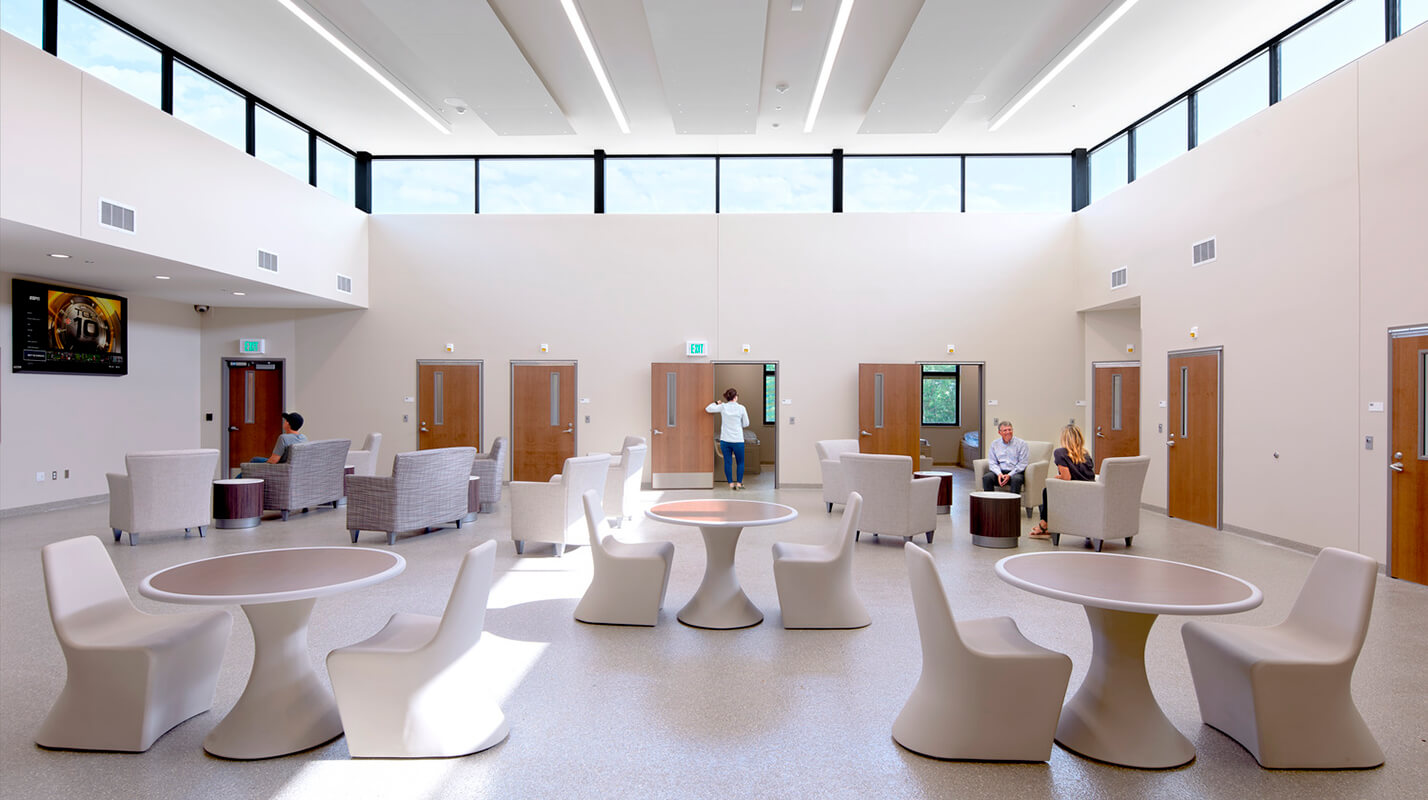
The power of extensive community collaboration
The TRC is the result of collaboration among Douglas County officials, the Bert Nash Community Mental Health Center, the Lawrence Memorial Health hospital (LMH), the Lawrence Police Department, and Lawrence community members. Coming together, we were able to have open dialogue about the needs for the project, services already existing in the community, areas lacking support, and understanding of the role each organization plays.
A successful outcome is when the community is engaged and understanding that architecture, and the design that we do, can help further the benefit of mental health. That, to me, is a success.
Jeff Lane, Principal at Treanor
The TRC is operated by Bert Nash, which provides dedicated medical and clinical staff and facilitates communication with law enforcement personnel. Doctors, medications, and facility maintenance are also provided by the Office of Mental Health. Patients have access to specialized behavioral health professionals such as mental health professionals, peer support specialists, behavioral health technicians, licensed addiction staff, case manager, and psychiatric professionals.
Law enforcement collaboration involves a new intake process perspective dedicated to the determination of what individuals most need when meeting an officer. If determined that the TRC is the best place for them to be, they have access to a separate intake space entrance at the facility where they can undergo screening procedures. This helps reduce what could be a stressful experience for those experiencing a mental health crisis and considering self-admitting at the main entry. After intake, the team initiates a warm hand-off between law enforcement and clinical staff, and the patient enters a welcoming soft interview space different from a typical jail booking area.
Identifying the differences between crisis intervention and psychiatric treatment was pivotal to the community’s understanding of the project vision.
How design supports patients in their recovery journey
The design of the TRC focuses on trauma-informed design, which places attention on how natural daylighting, soothing finishes, textures, and seating arrangements can help reduce anxiety, benefit the well-being of patients and staff, and improve the overall space environment. Flexibility also allows the TRC to adapt to various services and potential expansion needs in the future. Architectural elements like large windows, wooden doors, and natural finishes help foster a comforting, homelike environment.
For those struggling with mental health or addiction, the first step to seeking help can be difficult to take. Providing an encouraging, comforting, and normative entrance experience is critical to help the patient feel secure and confident in their choice to self-admit. Spaces throughout the TRC cater to both social interaction and individual solitude, aligning with patient preferences. A tranquil landscaped outdoor space boasts adaptable furnishings, weather-resistant turf, and discreet white netting that preserves unobstructed views of surrounding nature.
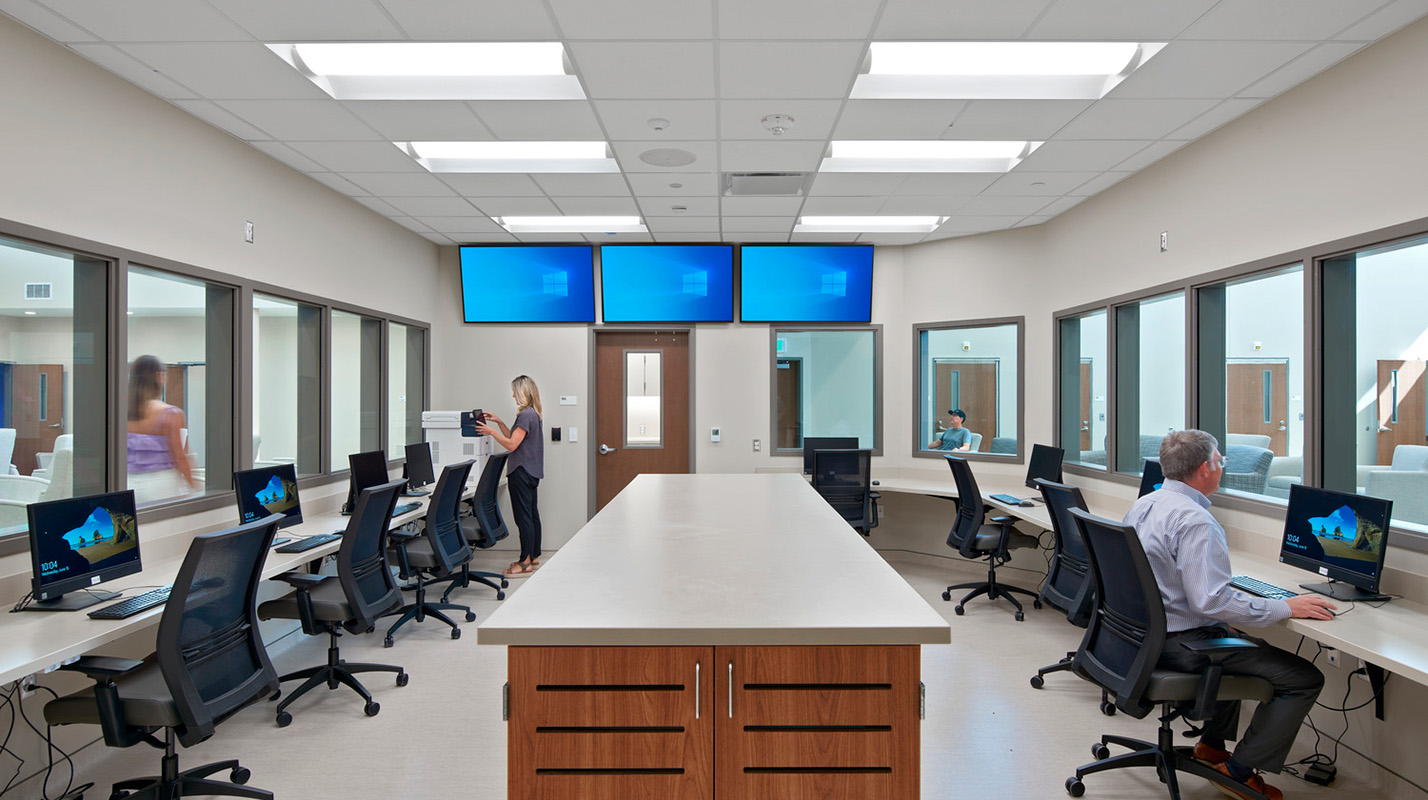
Services offered at the TRC
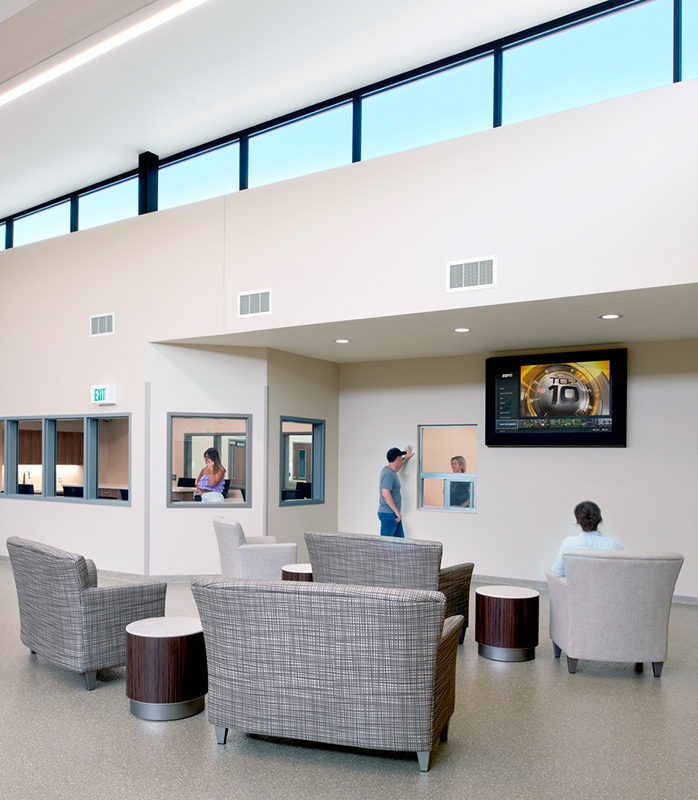
Urgent care
Open 24/7, the urgent care unit is the first space patients have access to after being admitted. It is voluntary, no appointments are necessary, and patients can leave at any time. It serves all Douglas County residents, children, and adults. At this unit, patients have immediate access to behavioral health crisis assessment and treatment, such as crisis observation and stabilization programs.
Treatment
An observation unit and a stabilization unit for adults helps provide a safe, structured place for individuals in crisis. The observation unit is for patients who need short-term care, usually less than 24 hours, and the stabilization unit is for patients who need longer-term care, up to 14 days. Treatment units are staffed by mental health professionals who provide individualized treatment plans, medication management, group therapy, and discharge planning.
Recovery
After patients leave the TRC, they have access to community resources and programs that will help create stability going forward. The TRC works with various partners and agencies to connect patients to services and support, such as housing, employment, education, healthcare, peer support, and recovery coaching.
A blueprint for future crisis intervention centers
The TRC sets a standard for quality care at the nexus of mental healthcare and law enforcement. With public involvement, community collaboration, and a strong foundation of needs and understanding, other communities can benefit from viewing this facility as a blueprint to apply solutions that fit their specific needs. The TRC is not just a building for Douglas County residents, but a symbol of hope and healing, recognizing that mental health and substance abuse disorders are taken seriously and met with compassionate support. For years to come, it will help foster a safer, healthier community.
In mental health, you don’t save lives through CPR, but you save it by being a safe place. I think it’s very important that they sense compassion when they’re here and will come back for more of it.
Jesse Belt, Clinical Educator at the Treatment and Recovery Center

